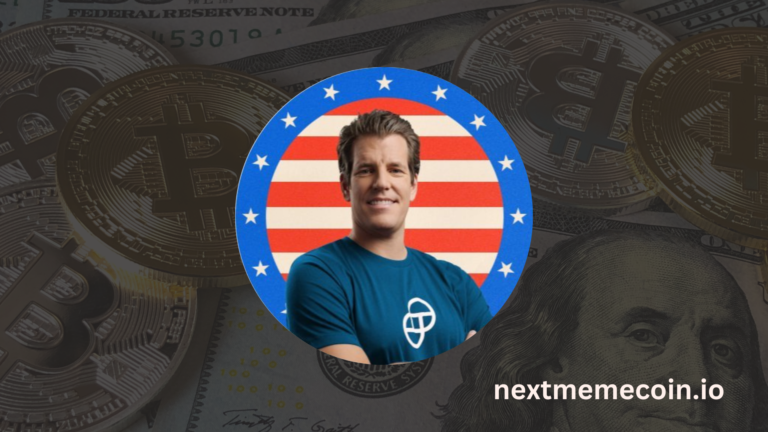Who is Jed McCaleb? Bio, Net Worth & Ripple’s Rough Ride
Jed McCaleb is a name that’s etched into the wild history of cryptocurrency—a programmer with a knack for building big ideas, even if they don’t always end smoothly. If you’re just stepping into the crypto world, McCaleb’s story is a rollercoaster worth riding. He’s the guy who kicked off Mt. Gox, the first major Bitcoin exchange, co-founded Ripple and its XRP coin, then split off to create Stellar, a rival network that’s still humming along. His journey’s been a mix of genius moves and messy exits, with billions of dollars in play and a trail of controversies behind him. This guide breaks down who Jed McCaleb is, how he built his fortune, and why Ripple’s rough ride shaped his path—and the crypto landscape you’re exploring today. No complicated tech talk here—just a clear look at a man who’s been at the heart of digital money’s ups and downs.
From Arkansas to Tech Titan: The Early Years
Jed McCaleb was born in 1975 in Fayetteville, Arkansas, a small-town start for a guy who’d later shake up global finance. He grew up in Little Rock, surrounded by a family that valued hard work—his dad was a truck driver, his mom a schoolteacher. As a kid, he was coding by third grade, a sign of the restless brain that’d drive him later. He headed to the University of California, Berkeley, chasing a computer science degree, but the classroom couldn’t hold him. He dropped out after a year, lured by the fast-paced tech scene in New York City around 1995. That move set the stage for everything to come.
In 2000, McCaleb launched his first big hit: eDonkey2000, a peer-to-peer file-sharing network. It was like Napster’s scrappy cousin, letting users swap music and movies with no central boss. At its peak, it had over 4 million users, a massive win for a 25-year-old coder. But the music industry wasn’t thrilled—by 2006, the Recording Industry Association of America sued his company, MetaMachine, for copyright infringement. McCaleb settled for $30 million USD and shut it down, walking away unscathed but wiser. That taste of legal heat didn’t stop him—it just pointed him toward a new frontier: cryptocurrency.
Mt. Gox: Bitcoin’s First Big Stage
In 2007, McCaleb snagged the domain mtgox.com, originally planning a site to trade Magic: The Gathering cards (the name’s short for “Magic: The Gathering Online Exchange”). But by 2010, Bitcoin—Satoshi Nakamoto’s brainchild—caught his eye. He pivoted hard, turning Mt. Gox into the world’s first major Bitcoin exchange. It was a clunky, wild-west platform, but it worked. By 2011, it handled 70% of all Bitcoin trades globally—a huge deal when a coin was worth just $1 USD.
McCaleb sold Mt. Gox that year to Mark Karpelès, a French coder, for an undisclosed sum—rumored to be a modest $50,000 USD plus a stake he later cashed out. He stepped away before the chaos hit. In 2014, Mt. Gox imploded, losing 850,000 Bitcoin (worth $450 million USD then, over $50 billion USD today) to a hack. McCaleb wasn’t in charge, but two traders sued him in 2019, claiming he knew about security flaws. The case fizzled—no proof stuck—but it tied his name to one of crypto’s ugliest chapters. Still, Mt. Gox showed he could spot a trend early and build something people wanted, even if he didn’t stick around for the fallout.
Ripple and XRP: A Vision Takes Shape
Hot off Mt. Gox, McCaleb turned to a new idea in 2011: a faster, cheaper way to move money across borders. He started coding what became the Ripple protocol—a system where transactions clear by network consensus, not Bitcoin’s slow mining. He teamed up with David Schwartz, a cryptography whiz, and roped in investor Jesse Powell for cash. By 2012, they’d built OpenCoin with Arthur Britto as strategist and Chris Larsen as CEO. That year, they launched the XRP Ledger, with XRP as its native coin—100 billion pre-mined, 80 billion handed to the company (later renamed Ripple Labs), and 20 billion split among founders. McCaleb’s cut? Around 9 billion XRP.
Ripple aimed to bridge banks and crypto, promising instant transfers for pennies while Bitcoin chugged along at $10 USD a coin. McCaleb was CTO, driving the tech, but cracks showed fast. He clashed with Larsen over direction—McCaleb wanted a decentralized dream, Larsen leaned toward banks and control. Tensions boiled over in 2013 when McCaleb tried to oust Larsen in a board vote and lost big—he was the only one in favor. He quit that July, keeping his XRP and a board seat, but he was done with day-to-day. The split was bitter, and it set off a chain reaction that’d ripple for years.
The XRP Sell-Off: Ripple’s Rough Ride Begins
In May 2014, McCaleb posted on a Ripple forum: “I plan to start selling all of my remaining XRP beginning in two weeks.” That 9 billion XRP stash—12% of the total supply—was worth $45 million USD then. The news tanked XRP’s price 40% in a day, spooking investors who feared a flood of coins would crash it more. Ripple sued him in 2016, claiming he’d broken a deal on how fast he could sell. They settled: McCaleb could unload set amounts tied to XRP’s daily volume—starting at 0.5% for years, ramping up later—stretching sales over nearly a decade.
From 2014 to 2022, he sold off chunks methodically. Blockchain tracker Whale Alert estimates he dumped 5.7 billion XRP by July 2022, pulling in $3.1 billion USD—peaking at $411 million USD in 2020 alone when XRP hit $0.34 USD. His last sale drained his “tacostand” wallet, ending an eight-year saga. Ripple fans cheered—his selling pressure was gone—but the U.S. Securities and Exchange Commission (SEC) had other plans. In December 2020, the SEC sued Ripple, alleging XRP was an unregistered security and its $1.3 billion USD sales since 2013 broke laws. McCaleb wasn’t named, but his massive sales fueled the narrative of XRP as an investment vehicle, not just a currency. The case drags on, with Ripple fighting back, but it’s kept XRP’s price wobbly—around $0.50 USD lately—far from its $3.84 USD peak in 2018.
Stellar: A New Star Rises
McCaleb didn’t sulk after Ripple. In 2014, he co-founded the Stellar Development Foundation with Joyce Kim, a former Ripple ally. Stellar’s pitch? A decentralized network for cross-border payments, like Ripple but focused on people, not banks. It launched with Lumens (XLM)—100 billion created, half for giveaways to boost use. Early on, it borrowed Ripple’s tech, but by 2015, McCaleb’s team built the Stellar Consensus Protocol, making it distinct. A $3 million USD loan from Stripe kicked things off, and deals followed—like IBM using Stellar for South Pacific banking in 2017.
In 2017, McCaleb spun off Lightyear.io, a commercial arm of Stellar, which merged with Chain.com in 2018 to form Interstellar. He’s CTO of Stellar today, steering its tech while the nonprofit pushes financial inclusion. Stellar’s XLM trades around $0.10 USD now, with a market cap topping $5 billion USD—smaller than XRP’s $28 billion USD but steady. It’s won fans for its low fees and speed, handling trades for as little as $0.00001 USD. McCaleb’s pivot from Ripple’s corporate vibe to Stellar’s grassroots mission shows his roots—freedom and access over suits and ties.
Net Worth: Billions in the Balance
So, how much is Jed McCaleb worth? It’s a moving target, tied to crypto’s ups and downs. Forbes pegged him at $2.4 billion USD in March 2023, ranking him #1143 on its billionaires list. That’s mostly from his XRP sales—$3.1 billion USD pretax from 5.7 billion coins, per Whale Alert. Taxes and fees likely trimmed that, but even at $2 billion USD post-tax, it’s a fortune. His Stellar stake adds more—say he holds 1 billion XLM (a guess, since he’s mum on it), that’s $100 million USD at $0.10 USD per coin. Plus, there’s Mt. Gox’s sale and smaller bets—like early Bitcoin he might’ve snagged at $1 USD each, now $60,000 USD.
Estimates vary. Some say $2.9 billion USD in 2025, factoring XRP’s peak sales and Stellar’s growth. Others keep it closer to $1 billion USD, assuming he’s cashed out most crypto. His latest gig, Vast—an aerospace startup he founded in 2021 to build space stations—could shift the math. Reports on X suggest he’s sunk $1 billion USD into it, a big bet on artificial gravity habitats. If Vast takes off, his worth could climb; if it flops, it’s a dent. For now, $2 billion to $3 billion USD feels right—a crypto haul tempered by real-world moves.
Beyond Crypto: Vast and Vision
McCaleb’s not done dreaming. In 2021, he started Vast, aiming to launch space stations with gravity by 2025. He’s chairman and sole funder, pouring in cash—possibly that $1 billion USD X posts mention—to hire ex-SpaceX talent like Hans Koenigsmann. Vast nabbed Launcher, a space firm, in 2023, and boasts over 600 staff by late 2024. It’s a leap from crypto, but it fits his pattern: spot a gap, build a fix, chase the future. He’s also given back—donating $500,000 USD in XRP to the Machine Intelligence Research Institute and joining OpenAI’s donor list in 2018.
He lives low-key in San Francisco with his wife, MiSoon Burzlaff, and two kids. He surfs in Costa Rica, codes in his downtime, and keeps his X posts (under @JedMcCaleb) sparse—last active in 2021 with 8,000 followers. His libertarian streak—ditch the middleman, empower the user—ties it all together, from eDonkey to Stellar to space.
Why McCaleb Matters to Crypto Newbies
For a beginner, McCaleb’s a guidepost. He shows crypto’s a messy, human game—not just numbers on a screen. Mt. Gox? It’s why you pick exchanges carefully. Ripple’s XRP ride? A lesson in how rules and drama can sway your $10 USD buy. Stellar? Proof you can start small—$5 USD in XLM—and tap a global network. His billions came from timing and tenacity, but his flops—like Ripple’s fallout—teach that even pioneers stumble. Buy $20 USD of XRP or XLM today, and you’re riding waves he helped start, flaws and all.
Frequently Asked Questions
What did Jed McCaleb do with Ripple?
He co-founded Ripple in 2012, built the XRP Ledger as CTO, then left in 2013 after clashing with the team. He got 9 billion XRP and sold it off for $3.1 billion USD by 2022.
How much XRP did McCaleb sell?
About 5.7 billion XRP from 2014 to 2022, worth $3.1 billion USD—peaking at $411 million USD in 2020 alone. His wallet’s empty now.
What’s Jed McCaleb’s net worth?
Roughly $2 billion to $3 billion USD, mostly from XRP sales, plus Stellar’s XLM and his Vast investment. Exact numbers shift with crypto prices.
Why did he leave Ripple for Stellar?
He split over vision—wanted decentralization, not Ripple’s bank focus. Stellar, started in 2014, reflects his push for open, low-cost payments.
What’s Vast, and how’s it tied to crypto?
Vast is McCaleb’s 2021 aerospace venture for space stations. He’s funding it—maybe $1 billion USD—from crypto gains, linking digital wealth to cosmic goals.
Conclusion
Jed McCaleb’s a crypto trailblazer who’s weathered storms and cashed in big. From Mt. Gox’s rise and fall to Ripple’s rocky XRP ride—yielding him $3.1 billion USD—to Stellar’s steady hum, he’s shaped how you can swap $5 USD across borders today. His net worth, likely $2 billion to $3 billion USD, fuels Vast’s space dreams, showing crypto’s real-world reach. For beginners, he’s a map of what’s possible—brilliance, blunders, and all. Whether he’s surfing or coding, McCaleb’s legacy is in the coins you hold and the stars he’s chasing next.




